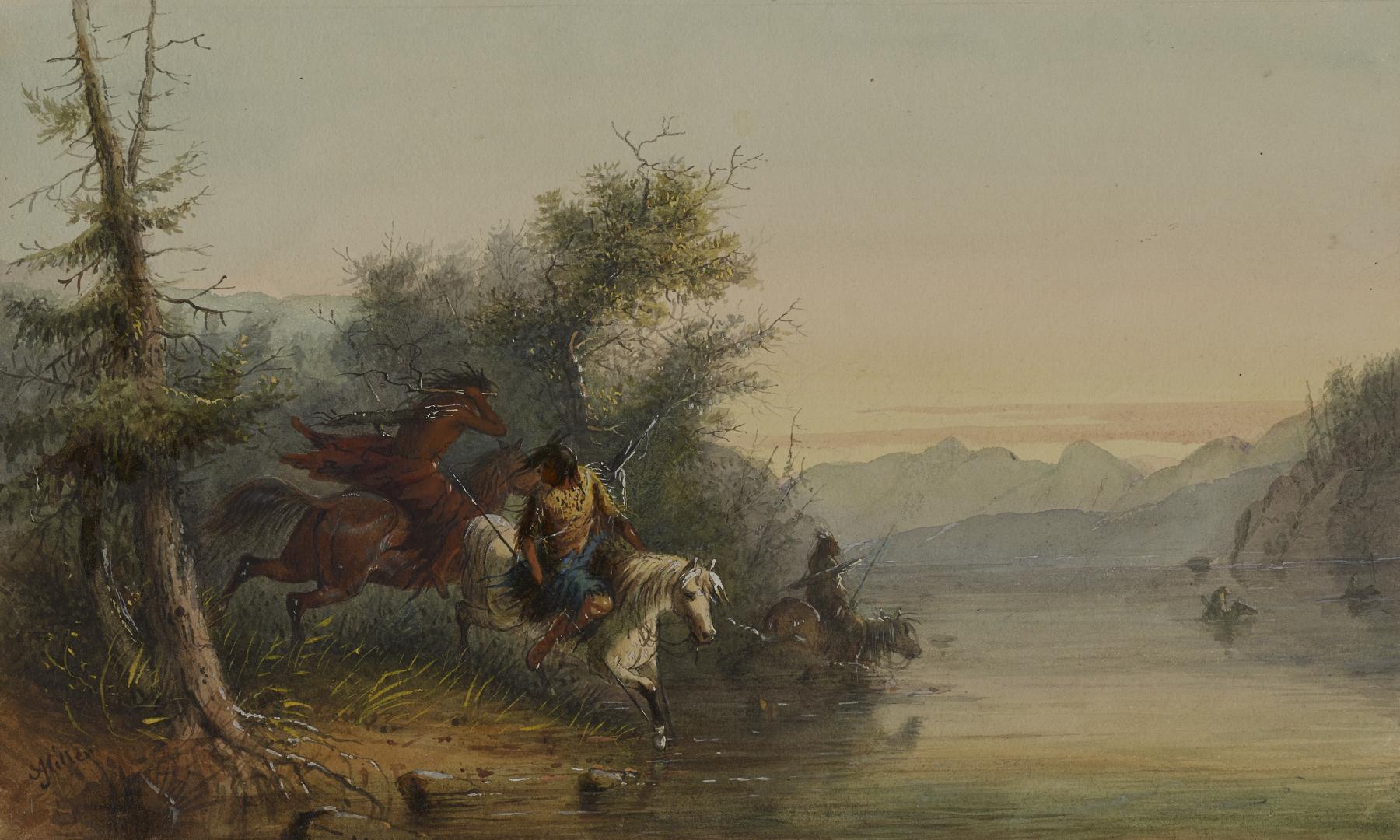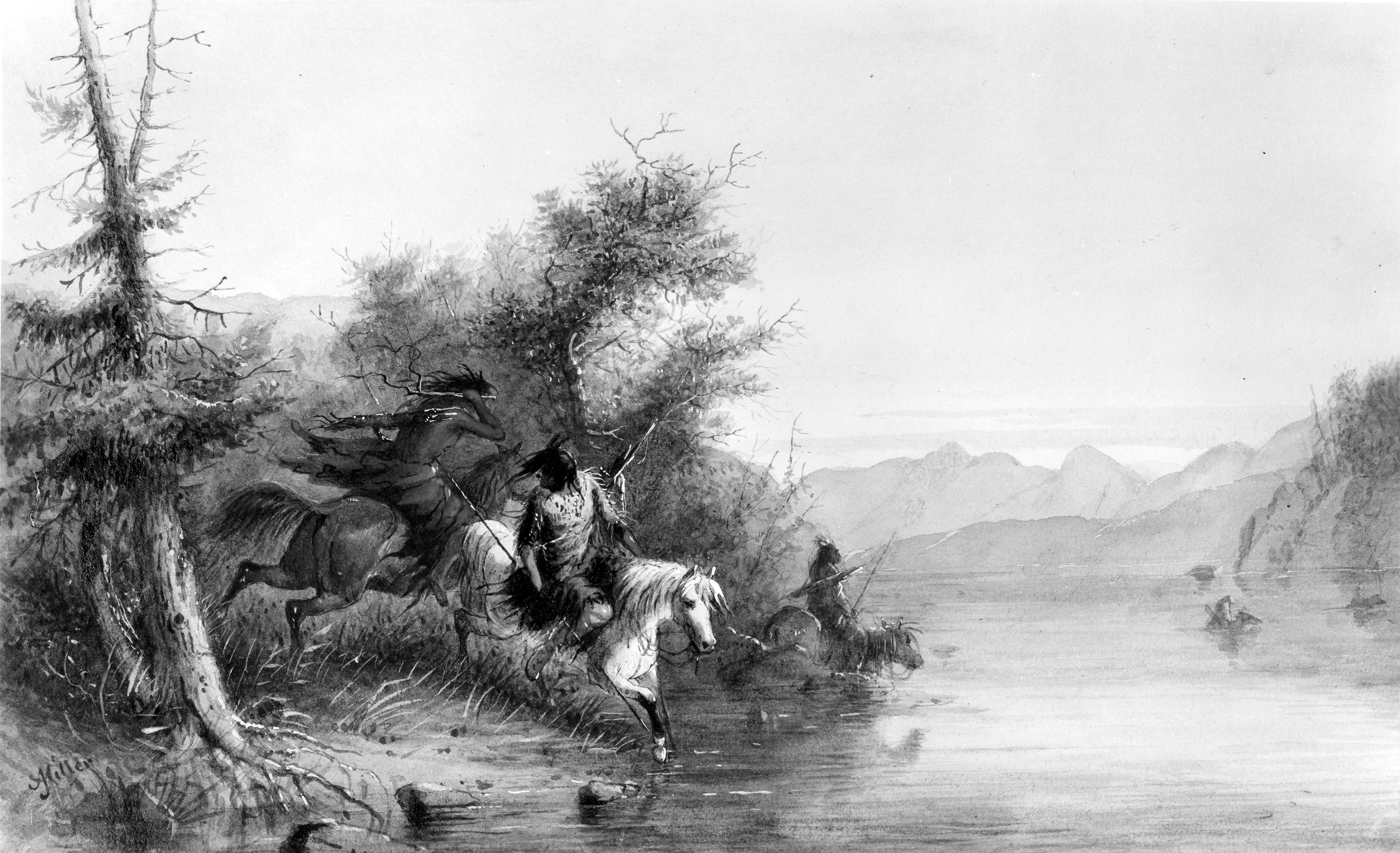Snake Indians: Fording a River
(18th and 19th Centuries )
Extracts from Alfred Jacob Miller’s original text, which accompanied his images of Native Americans, are included below for reference.
"In comparing the Shoshonee, or Snake Indians, with other tribes on our route, we found them superior in many points. Their horses and equipments were better;- they were more friendly, sociable, and hospitable. This latter trait is remarkable among uncivilized people. The Arabs are famous for it. Ledyard and Mungo Park were relieved and cheered by it among the benighted Africans, & Asiatics and other travellers give testimony to its truth, who have visited the Indian tribes of North America. We have encamped in the midst of 3,000 Snake Indians near the Rocky Mountains, and have maintained their good will as long as we sojourned with them. They would send out war parties against the Blackfeet and other tribes, but our intercourse was extremely satisfactory. The view presented is a quiet evening scene, with Snake Indians looking for a good fording place, on the way to the Camp from a hunting excursion." A.J. Miller, extracted from "The West of Alfred Jacob Miller" (1837).
In July 1858 William T. Walters commissioned 200 watercolors at twelve dollars apiece from Baltimore born artist Alfred Jacob Miller. These paintings were each accompanied by a descriptive text, and were delivered in installments over the next twenty-one months and ultimately were bound in three albums. Transcriptions of field-sketches drawn during the 1837 expedition that Miller had undertaken to the annual fur-trader's rendezvous in the Green River Valley (in what is now western Wyoming), these watercolors are a unique record of the closing years of the western fur trade.
Inscription
Provenance
Provenance (from the French provenir, 'to come from/forth') is the chronology of the ownership, custody, or location of a historical object. Learn more about provenance at the Walters.
William T. Walters, Baltimore, 1858-1860, by commission; Henry Walters, Baltimore, 1894, by inheritance; Walters Art Museum, 1931, by bequest.
Geographies
USA (Place of Origin)
Measurements
H: 7 3/4 x W: 12 3/4 in. (19.7 x 32.4 cm)
Credit Line
Commissioned by William T. Walters, 1858-1860
Location in Museum
Not on view
Accession Number
In libraries, galleries, museums, and archives, an accession number is a unique identifier assigned to each object in the collection.
In libraries, galleries, museums, and archives, an accession number is a unique identifier assigned to each object in the collection.
37.1940.144







